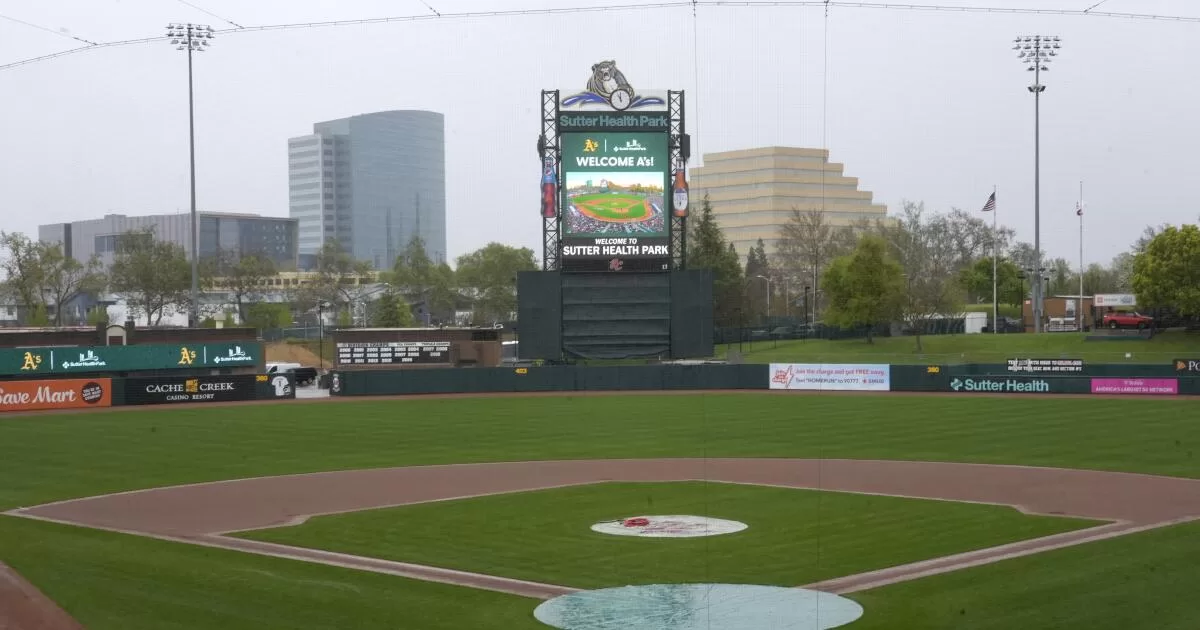The Athletics will play on grass in Sacramento next season, with Major League Baseball yielding to concerns from players about the risks of an artificial turf surface in a city where summer temperatures often rise above 100 degrees.
The triple-A stadium into which the A’s are moving, Sutter Health Park, currently features a grass field. However, with the A’s and the triple-A Sacramento River Cats expected to share the stadium next season, MLB planned for artificial turf because it did not believe grass could remain robust all summer with either the A’s or River Cats playing on it every day.
The league and the players’ union recently reviewed an assessment that concluded a grass field could remain viable all summer, even if not necessarily in prime condition.
“Our shared, primary concern is ensuring the best and safest playing surface for the A’s, River Cats, and visiting players,” a league spokesman said Monday. “In light of the players’ clear preference for natural grass, and after weighing with the MLBPA the potential risks and benefits of maintaining natural grass versus replacing the playing surface with synthetic turf, all the parties are aligned in moving forward with a natural grass field for Opening Day 2025.”
The league said it also agreed to resolve union concerns by expanding dugouts, renovating bullpens and a new batter’s eye to mitigate glare.
The MLBPA declined comment Monday.
The A’s ended their tenure in Oakland last month, and they hope to move into a new ballpark in Las Vegas in 2028.
They have chosen Sacramento as their interim home. The union raised alarms about how a turf field – even modern ones with a cooling element, as commissioner Rob Manfred touted in July – could endanger players amid a scorching summer.
The average high temperature in Sacramento was 107.5 over the first 12 days of July, with the high hitting 113 on multiple days.
A turf surface can run 35 to 55 degrees hotter than natural grass, according to the Penn State Center for Sport Surface Research. Contact with a turf field in excess of 120 degrees can cause skin burns, according to the National Recreation and Park Assn.
